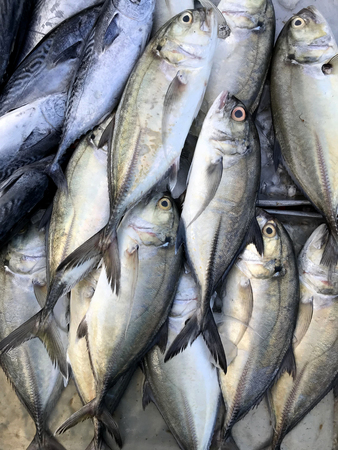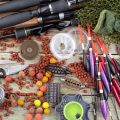1. Choosing the Right Tackle Box for Saltwater
If you’re serious about saltwater fishing, your tackle box needs to be as tough as you are. Salt, sand, and spray will chew up cheap gear in no time, so leave the freshwater boxes at home. What separates a true marine-rated tackle box from a run-of-the-mill organizer? It’s all about rugged construction and corrosion resistance. Look for boxes made from heavy-duty, UV-resistant plastics that won’t crack or fade under blazing sun or get brittle over time. Stainless steel hardware is non-negotiable—rusted hinges and latches spell disaster when you’re chasing big reds or stripers on the coast. Marine boxes often feature watertight gaskets and reinforced lids, keeping salt spray out of your precious gear even when the chop gets nasty. Double-locking latches and non-slip bases keep everything secure in rough seas or when bouncing along the jetty rocks. Simply put: don’t gamble with your gear—invest in a tackle box built to withstand whatever the ocean throws at you.
Essential Saltwater Fishing Tackle & Tools
When you’re prepping your tackle box for a saltwater mission—whether you’re chasing stripers in the surf or battling pelagics offshore—having the right gear and tools is non-negotiable. Saltwater is unforgiving, so your setup needs to be bulletproof. Here’s a breakdown of the must-have items and how to pack them like a pro.
Leader Materials
Saltwater predators mean business. You’ll need abrasion-resistant leaders that can take a beating from sharp gill plates, rocks, and toothy critters. Fluorocarbon is king for stealth in clear water, while heavy monofilament holds up for big game. Always carry an assortment of strengths and lengths.
| Leader Type | Best For | Pound Test Range |
|---|---|---|
| Fluorocarbon | Clear water, spooky fish | 20–80 lb |
| Monofilament | General use, shock absorption | 30–100 lb |
| Wire Leader | Toothy species (bluefish, mackerel) | 20–60 lb |
Corrosion-Proof Pliers & Split Ring Tools
A solid pair of stainless or aluminum pliers is your best friend on the salt—think hook removal, crimping sleeves, cutting line, or mashing barbs. Toss in a split ring tool for quick lure swaps and you’ll never miss a hot bite because of slow rigging.
| Tool | Main Use | Key Feature |
|---|---|---|
| Pliers (Stainless/Aluminum) | Hook removal, cutting braid/mono, crimping | Corrosion resistance, line cutter, lanyard loop |
| Split Ring Tool | Lure hardware changes (swivels/split rings) | Serrated tip for split ring manipulation |
Offshore Rigs & Surf-Ready Setups
Your box should hold pre-tied rigs for everything from snapper blues to trophy tuna. Think three-way rigs, fish-finder setups for surf casting, and heavy-duty bottom rigs. Pre-rigged leaders save time when the action heats up.
Packing Tips: Boat vs. Surf Fishing Essentials
| Surf Fishing Must-Haves | Boat Fishing Must-Haves | |
|---|---|---|
| Tackle Storage Style | Belt pouches, waterproof trays, sand-proof bags | Tackle trays with secure lids, dry bags, utility bins |
| Lures/Bait Rigs | Spooning metals, poppers, bait hooks | Divers, jigs, trolling rigs |
| Tools & Safety Gear | Pliers on lanyard, sunscreen, first aid kit | Pliers/multi-tool, dehooker, fillet knife |
Pro Tip:
If you want to fish hard and fast American-style—organize each tool and rig by target species or fishing technique in labeled zippered pouches or Plano boxes. This way you can grab-and-go without second-guessing your setup when the bite’s on fire.
![]()
3. Organizing Lures, Baits & Terminal Tackle
Tactical Layouts: Hard Baits, Jigs, Poppers & Leaders
When you’re chasing saltwater monsters, having your tackle box dialed in isn’t just about neatness—it’s about being ready to react fast and switch tactics on the fly. Let’s get real: fish won’t wait for you to untangle a mess of gear. That’s why a tactical layout is crucial.
Divide and Conquer: Hard Baits vs. Soft Plastics
Start with dedicated trays or waterproof containers for hard baits—think stickbaits, crankbaits, and jerkbaits—keeping them separated by size and diving depth. Use slotted foam inserts to prevent hooks from tangling, so you can grab the exact bait you need without losing precious seconds. For soft plastics, opt for resealable bags organized by style (swimbaits, shad tails) and color. Toss them in labeled zip pouches or stackable plastic sleeves for easy access.
Jigs & Poppers: Ready for Action
Saltwater jigs come in all shapes and weights; heavy slabs go in one section, lighter bucktails in another. Use small tackle trays with adjustable dividers to keep jig heads separated from bodies, minimizing rust and damage. Poppers and surface lures deserve their own row—hang them vertically using clips or custom foam strips to preserve their finish and hooks.
Leaders & Terminal Tackle: No More Tangled Messes
Pre-tie leaders at home and coil each one individually with twist ties or leader wallets—this saves serious time when the bite’s on. Store swivels, snaps, split rings, and beads in clear micro-containers or pill organizers; label each compartment so you’re not fumbling when you need to re-rig under pressure.
Real-Life Pro Tip
Keep one tray as your “hot zone”—stock it with your top three producers for the season. This way, if the action heats up or a blitz pops off, you’re two steps ahead while everyone else is still digging through their gear.
A well-organized arsenal means less downtime and more casts. Whether you’re hunting stripers off Montauk or redfish in the Gulf, smart tackle box organization gives you an edge that starts before you even hit the water.
4. Rust-Prevention & Maintenance Hacks
Saltwater is a notorious gear killer—ask any Gulf or Atlantic coast angler. Keeping your tackle box organized means nothing if your tools and lures are rusted out after one trip. Here’s how the pros in the U.S. keep their setups clean, dry, and ready for action, even when fishing in brutal coastal conditions.
Essential Rust-Busting Products
| Product Type | Brand Examples | Why It Works |
|---|---|---|
| Corrosion Inhibitor Spray | WD-40 Specialist, CorrosionX | Creates a protective film on metal surfaces; stops salt from eating into hooks and pliers. |
| Desiccant Packs | Silica Gel, Dry & Dry | Sucks up moisture inside your tackle box; keeps air dry around gear. |
| Freshwater Rinse Bottles | Nalgene, Gatorade bottle (DIY) | A quick rinse right after landing helps wash off salt before it does damage. |
| Anti-Rust Liner Mats | Flambeau Zerust, Plano Rustrictor inserts | Liners that release vapor corrosion inhibitors (VCI) to protect everything inside the box. |
Maintenance Habits That Locals Swear By
- Rinse After Every Trip: Don’t wait till you get home—hit your gear with freshwater at the dock or beach. Even a quick splash-down can make all the difference.
- Dry Before You Stash: Lay out lures, pliers, and knives in the sun or on a towel until they’re bone-dry before packing up. Never seal damp gear in your box—moisture breeds rust fast.
- Tackle Box Airing: Open all compartments when you get home. Let air circulate overnight to zap lingering humidity.
- Lube Moving Parts: Reel handles, scissor joints, and plier springs need a drop of oil after every couple trips. Prevents seizing and corrosion where it matters most.
- Swap Out Rusty Gear: If something starts to corrode, pull it ASAP. Rust spreads like wildfire in closed boxes—better to lose one hook than a whole tray.
Tough Storage Solutions for Coastal Anglers
| Storage Hack | Description/Tip |
|---|---|
| Airtight Tackle Boxes | Picks like Plano EDGE use gasket seals to lock moisture out—ideal for surf casting setups. |
| Sacrificial Anodes (DIY) | Add a piece of zinc or magnesium strip inside your box; it corrodes first, protecting your main gear (old-school but still used by boat captains). |
| Labeled Compartments for Wet/Dry Gear | Keep one tray just for “wet returns”—anything used that day gets isolated until you can clean and dry it properly at home. |
| Baking Soda Sprinkle | A dusting of baking soda under trays absorbs extra moisture and neutralizes acids from salt residue. |
The Bottom Line: Pro Habits Win Long-Term
If you want your tackle investment to last season after season, make these habits second nature. Ask any Florida Keys guide—they’ll tell you: gear maintenance isn’t optional, it’s survival. Keep it clean, keep it dry, and keep fishing hard without worrying about rust ever again.
5. Storage Shortcuts & DIY Mods
If you want to fish like a pro, you need a tackle box that works as hard as you do. Saltwater fishing demands serious gear, and packing it all in can be a challenge—unless you’re willing to get creative with your storage. Here’s where battle-tested hacks and some good old American ingenuity come into play. Let’s break down some killer mods and space-saving ideas that’ll squeeze every ounce of utility out of your tackle box.
Foam Inserts: Custom Compartments on the Cheap
Don’t waste time digging for the right jig head or leader. Grab a sheet of closed-cell foam from your local hardware store, cut it to fit your tray, and slice slits for hooks, lures, or flies. This keeps everything visible and tangle-free, even in rough seas. Bonus: foam dries fast and won’t rust your hooks.
Magnetic Strips: No More Lost Tools
Slap a magnetic tool holder (the kind mechanics use) inside your lid or along the sidewall for instant access to pliers, scissors, and small jigs. It keeps metal items locked down when the boat hits a wave—and saves precious seconds when that trophy fish is on the line.
Pill Bottles & Altoids Tins: Tiny Storage Titans
Empty prescription bottles or mint tins are perfect for storing swivels, split shot, beads, or even pre-tied rigs. Label them with a Sharpie and never fumble through a mess again. They’re waterproof and nearly indestructible—plus, you’re giving household junk new life.
Zip Ties & Velcro: Order From Chaos
Bundle up loose leader spools with Velcro strips or zip ties. Mount small Velcro patches inside your box for securing packets of soft plastics or spare hooks. It’s cheap, easy, and rock-solid—even if you’re getting slammed by swells off the coast.
Coffee Cans & Peanut Butter Jars: Bulk Bait Solution
Need to pack extra bait or larger tools? Clean out those plastic coffee cans or peanut butter jars. They’re stackable, seal tight against salt spray, and take up less room than bulky factory packaging. Plus, they double as makeshift bait buckets in a pinch.
Think Outside the Box—Literally
The best saltwater anglers don’t just buy storage—they build it. Re-purpose egg cartons for fly storage, use kitchen drawer dividers for big trays, or install removable cup holders for drinks and loose gear. Every inch matters when space is tight offshore.
Your tackle box should work smarter so you can fish harder. With these DIY shortcuts and mods, you’ll fit more gear, find what you need fast, and spend less time sorting—more time hooking monsters.
Quick-Access Essentials & Safety Gear
When you’re in the thick of saltwater fishing, seconds count. That’s why staging your tackle box for quick access to essential gear is a game-changer—sometimes, it’s the difference between landing that trophy redfish or fumbling at the worst possible moment. Let’s break down how to organize your box like a pro, so your mission-critical tools and safety supplies are always right where you need them.
Staging for Fast Draws
Your top compartment or lid pocket should be reserved for items you reach for constantly. Think stinger hooks for those toothy predators and quick rig changes, leader line spools, split ring pliers, and a multi-tool. The key is muscle memory: every tool has its spot, and nothing slows you down when fish are boiling on the surface.
First-Aid Kit: Don’t Fish Without It
Saltwater fishing can get gnarly fast—hooks in hands, line cuts, sunburn, or even jellyfish stings. A compact first-aid kit should live in its own waterproof pouch, easy to grab with one hand. Stock it with bandages, antiseptic wipes, tweezers, medical tape, pain relievers, and sunscreen. In an emergency, this kit might save your day—or someone else’s.
Legal Rec Cards & Regulations
Stateside saltwater anglers know the drill: always have your fishing license and any required species tags or rec cards within arm’s reach. Keep these documents in a ziplock or weatherproof wallet inside your main lid compartment. Game wardens don’t mess around—if you get checked on the pier or boat ramp, you’ll want your paperwork ready without digging through gear.
Why Safety Comes First
No matter how dialed-in your tackle is, never skip on safety. Alongside your first-aid kit, stash a whistle (for signaling), a compact LED flashlight or headlamp, and spare batteries. Out on the brine, conditions change fast—and if things go south, being prepared buys you time and peace of mind.
A well-organized tackle box isn’t just about catching more fish—it’s about staying sharp and safe out there. Prioritize quick-access essentials and always respect the ocean’s unpredictability. When you’re staged for action and prepared for emergencies, you fish smarter and harder—every trip.


